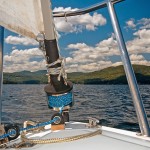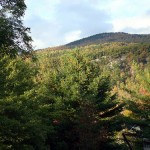How Much Do Vacation Homes Contribute To NH’s Economy?

Crosby_Allison / Flickr
For a small state, New Hampshire's got a lot of wide, open spaces, be they near lakes, mountains, or fields. And according to one report, that's very, very good for the second home economy.
If you tuned-in to NHPR’s “The Exchange” yesterday morning, you might have heard economist Russ Thibeault talking about an interesting (and these days, somewhat obscure) report. We’ll get to that in a minute. But first, a bit of background.
Yesterday’s program was based on StateImpact’s reporting, which focused on the economic impact of New Hampshire’s vacation homes. And as we’ve noted in previous coverage, that’s a nebulous number to track down. For one thing, the Division of Travel and Tourism doesn’t keep track of second homeowners. Meanwhile, although you can get a decent count of seasonal homes based on Census data, it’s harder to tell how many of those homes have been converted to full-time residences, and vice-versa. And, as noted at last week’s New England Economic Forecast conference, it’s hard to pin-down solid retail data, because New Hampshire doesn’t have a sales tax. New Hampshire businesses aren’t reporting their sales in the same, detailed way that retailers are in most other states. So it’s tough to look at towns with high concentrations of vacation homes and drill down to how much money those homeowners are pumping into the local economy.
The economists we spoke with over the summer by and large said they didn’t know of any studies done on the economic impact of vacation homes in the state. They agreed it could be done, but it’d be tough. And we found the same thing. But economist Russ Thibeault did manage to track down an old report focused on vacation homes vis-a-vis the preservation of the state’s open spaces.* And he was kind enough to give this paper to StateImpact following “The Exchange.”
Here’s what Thibeault found: In 1999, the Society for the Protection of New Hampshire Forests released a study called “The Economic Impact of Open Space in New Hampshire.” Using data from 1996-97, researchers found the following information about the state’s second home economy:
- Attributed Direct Income: $478,783,000
- Attributed Indirect Income: $478,783,000 (Yes, they are listed as the same number in the report.)
- Attributed State and Local Tax Revenues: $285,855,786
- Attributed Direct and Indirect Jobs: 15,029
Of course, all of these numbers would have almost certainly changed since 1997. But it’s still interesting that someone did, in fact, do a study. And these figures provide a nice starting point for thinking about how important second homes are–and have historically been–to the New Hampshire economy.
*Researchers defined “open spaces” as, “areas that are not built-up, excavated, or developed. Wild areas, forests, tree farms, open productive agricultural land, grassland, pasture, wetlands, lakes, natural seashores, and non-built up parts of state and municipal parks are all included. Open space does not need to be completely natural or pristine to be included under this definition. At present, approximately 89% of New Hampshire can be classified as open space.”

